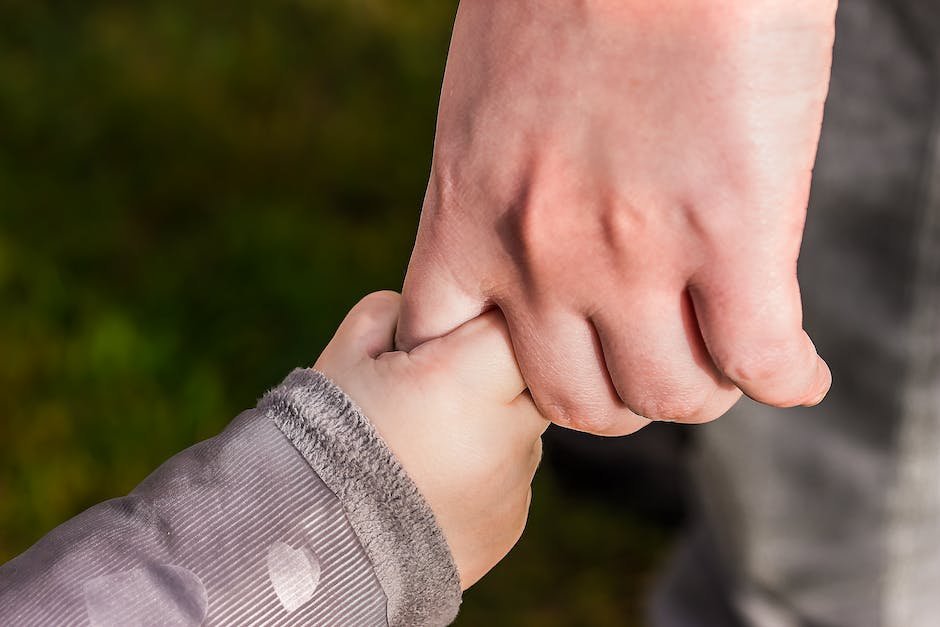
Autism Spectrum Disorder (ASD) is a multifaceted developmental disorder characterized by persistent deficits in social communication and interaction, coupled with restricted and repetitive behaviors. Among the challenges that may come with this condition, aggressive behavior is often one of the most trying for caregivers to navigate. Recognizing aggression in children on the autism spectrum often involves understanding the child’s unique communication style and potential reactions to trigger stimuli. However, the manifestation of aggressive behavior can vary from child to child, underlining the importance of individualized understanding and responses. It is critical to recognize that aggression may not be an act of defiance or disobedience; rather, it’s the child’s way of conveying discomfort, frustration, or a multitude of other emotions and needs.
Recognizing aggression in children with autism
Recognizing Signs of Aggression in Children with Autism: A Parent’s Guide
Understanding and supporting a child with autism is a beautiful journey filled with breathtaking highs and testing lows, much like any other parenting experience. Aggression can be a natural part of this journey for some children with autism.
Aggression in autistic children commonly manifests itself in different ways such as self-injury, destruction of property, or physical aggression towards others. These behaviors are typically brought about by several factors, often linked to the child’s anxiety or struggle to communicate effectively. It’s important to understand that aggression is not a trait of autism, but a reaction to the child’s environment or inner stress.
Aggression may be exhibited by self-injury, which includes behaviors like head-banging, hair-pulling, or skin-picking. These actions often denote a child’s desperate attempt to communicate discomfort and stress. They’re essentially crying out for help in the only way they know how to.
Destruction of property is another form of aggression shown by children with autism. This could be tearing up books, breaking toys or household items, or otherwise creating chaos. Often, this destructive behavior stems from frustration, lack of control, or sensory overload. The child may be attempting to communicate dissatisfaction or unease with their surroundings.
Hot-temper displays or physical aggression towards others are common too. This could kick off as biting, hitting, slapping, or other forms of violence. This display can spring from frustration or as a result of not knowing how to express their feelings appropriately. This form of aggression can often be the most worrying for parents and caregivers as it can be distressing for everyone involved.
While it can be incredibly challenging to manage such aggressive behaviors, always remember that these behaviors are the child’s desperate means of expression. Identifying the underlying cause is a crucial step in managing these behaviors. To do this effectively, consider employing a ‘three Cs’ strategy – cause, context, and consequences.
Understanding the cause typically involves finding out what triggers the aggressive behavior. This might include environmental elements, personal discomfort, or sensory overload. The context is the situation where the aggression arises. Recognizing the scenarios where these behaviors happen can help manage and possibly prevent them. The consequences deal with the child’s reaction to how others respond to their aggression. This understanding helps create a compelling intervention plan.
You’re also encouraged to reach out to professionals like therapists, school counselors, and pediatricians who can provide tools and resources to help navigate through these challenging times. Remember not to lose heart, because no one is better qualified to support your child than you.
As parents and caregivers, our love for our child wants us to fix things fast. However, in the instance of managing aggression in children with autism, patience, understanding, and consistency become your most powerful weapons. Always keep the dialogue open and genuine about the difficulties, victories, and complexities of this journey – because every child’s progress, no matter how small, is a conquest worth celebrating.

Possible triggers and causes of aggression
Unraveling the Triggers of Aggression in Autistic Children
When walking the path of life with children diagnosed with autism, understanding their behavioral expressions, particularly aggression, becomes absolutely pivotal. As parents, dedicating time to grasp the causes behind these expressions may be challenging but it forms an integral part of their unique journey. While we’ve shed light on the concepts of aggression in autistic children earlier, today we peel another layer off the onion and take a closer look at what possibly triggers this aggression.
The landscape of triggers is undoubtedly vast and ranges from difficulties in communication to external environmental aspects. It is crucial to understand that each autistic child is unique, hence the triggers of aggression may vary from one child to another.
Unmet needs— just like us, children with autism have needs—physical, emotional or intellectual. The inability to meet these needs leading to frustration can often brew up turbulent storms of aggression. These needs could be as simple as hunger or as complex as sensory overload.
Communication challenges— children with autism might struggle with language and speech, which can make expressing their feelings, needs, and thoughts difficult. The frustration associated with failed attempts at communication can initiate bouts of aggression.
Sensory overload— Factoring in the sensory-rich surroundings that we live in, we start to appreciate why children with autism might find it hard to stay calm. Bright lights, loud noises, or even the texture of certain foods can trigger sensory overload leading to aggressive outbursts.
Unexpected changes— For the uninitiated, Autism is marked by an affinity towards rigid routines and consistency. Abrupt changes in their usual schedule can be incredibly distressing and prompt aggressive behavior.
Now, knowing the possible triggers is half the battle won, the next step is action. While managing these triggers may at times feel like moving mountains, remember resilience is key.
The time-tested tip for dealing with unmet needs is simple—pay attention. Be proactive in assessing your child’s needs. Have a straightforward communication system in place, it can be anything from sign language, picture cards, or speech therapy, based on what your child is responsive to and comfortable with.
For sensory issues, an Occupational Therapist can aid in developing coping strategies. You might want to consider maintaining a soothing, somewhat bland environment if your child is hypersensitive. When it comes to the disdain for changes, employing visual schedules or priming techniques can be quite the lifesavers.
Navigating the realm of parenthood becomes doubly complex when you are raising an autistic child. However, armed with the right knowledge and wrapped in a cloak of unconditional love, care, and patience, you can brave any storm—even aggression.
Remember, the path to progress might be strewn with boulders, and the pace might be slow, but every tiny step forward is a victory. Embrace these victories, for they are beacons of hope guiding you on this unique journey.
As always, keep fostering insight, and when in doubt, tap into the ocean of professional wisdom. At the end of the day, a little understanding goes a long way to making your child’s world a happier, safer place.

Strategies to manage aggressive behavior

Seeking help and support
“Stepping Up the Game: Uplifting Support Networks for Parents Navigating Aggression in Autism”
Every family’s journey with autism is unique, yet threads of similarity connect us. Managing aggression can often feel like a solitary challenge, but it isn’t a journey you need to undertake alone. There are various avenues of help and support that can guide parents and caregivers during this delicate phase.
One often under-explored resource is online communities dedicated to autism parenting. Websites like Autism Parenting Magazine, Spectrum Women, and Autism Society offer a wealth of resources, ranging from articles on managing aggressive behaviors to forums where parents can share experiences and advice. These can serve as a virtual support group, providing comfort in knowing you’re not alone in this journey.
Parental support groups also play a vital role in healthily managing aggression in children with autism. They provide a platform for sharing personal experiences, strategies, and psychological comfort as parents form an empathetic bond over shared struggles. The parents who’ve navigated these waters before can be a guiding beacon, suggesting strategies or therapies that worked for their children.
Autism-friendly recreational activities have also shown success in minimizing aggressive behaviors. Engaging in sports like swimming, horseback riding, or participating in music and art therapies can develop communication and social skills, lessening instances of aggression. Centers specializing in these activities understand the needs and challenges of autistic children, ensuring a supportive environment for their growth.
Additionally, intervention programs designed specifically for children with autism, such as Applied Behavior Analysis (ABA), can help manage aggressive behavior. ABA Therapy focuses on improving specific behaviors, including social skills, communication, and academics, as well as learned skills like grooming, hygiene, job competence, and even punctuality- all crucial for social adaptation.
Another essential tool lies in collaborating with your child’s education team. A comprehensive Individualized Education Plan (IEP) that anticipates potential triggers to aggression can significantly help manage such behaviors in a school setting. Communication with teachers and support staff ensures all those interacting with your child understand their unique needs, thereby reducing instances of aggression due to misunderstood distress signals.
Navigating a child’s aggression associated with autism can often feel overwhelming. But it’s essential to remember that every bit of progress, no matter how small, is nonetheless a step forward – a victory to be celebrated. Parenting a child with autism teaches resilience and unconditional love like no other experience. Armed with understanding, professional advice, effective communication strategies, and a supportive community, managing aggression in children with autism becomes not just a possibility but a journey toward considerable progress.

While learning to manage a child’s aggression can be challenging, awareness and understanding play a vital role. Recognizing the child’s unique triggers and responding with calm, reassurance, and distraction can mitigate these incidents. Proactively building a predictable routine and a calming environment can also contribute to a reduction in aggressive outbursts. Moreover, it’s important to remember that seeking help is not a sign of failure. There are numerous resources and support groups available to parents and families dealing with aggression related to autism spectrum disorder. In this collective endeavor, professional guidance and community assistance can significantly lighten the burdens, foster understanding, and aid in enhancing the child’s quality of life.




